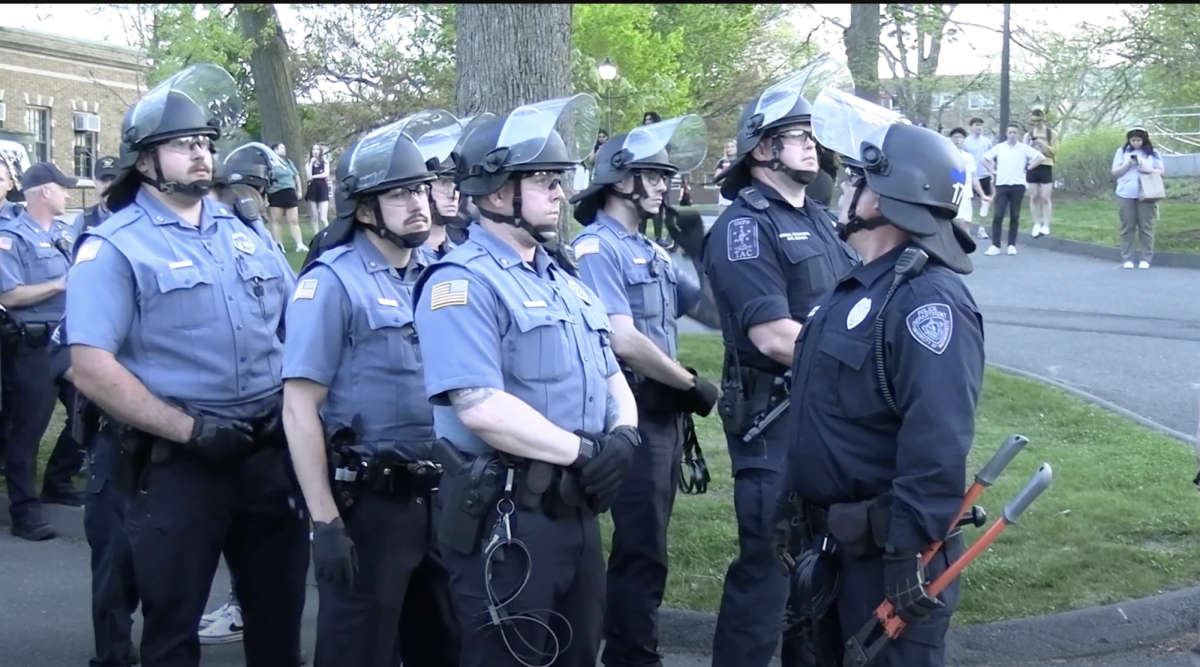The Passion of the Christ
Directed by Mel Gibson
Starring Jim Caviezel Monica Bellucci
Icon/Newmarket
Rated R
126 mins
Grade: C+
“The Torture of Christ”
That’s as an apt a title as any for Mel Gibson’s bludgeoning, gore-drenched retelling of the final hours of Jesus Christ. It is a title with far more veracity than, say, the actual moniker, the clunky and awkward-sounding “The Passion of the Christ.” It isn’t so much a movie about Jesus, but a movie about Jesus’ suffering. For all the violence and torment on display, there’s precious little faith or spirituality.
In “The Passion of the Christ” Jesus gets punched, kicked, thrown over a wall and beat into a purple, bruised pulp – and that’s just in the first half hour. He gets whipped, first with canes than with cat-o-nine-tails tipped with jagged shards of metal and stone. When he gets nailed to the cross, he’s done so with loving focus on the nails being pounded into his hands. The camera lingers on the gory, criss-crossing wounds on his body, the oozing, red lattice work that makes Jesus look like a walking sore. There’s no doubt that Gibson, in his way, wants us to see, feel, and know the full extent of Jesus’ suffering for our sins. He succeeded. But did he have to rub our faces in torture to do it?
“The Passion of the Christ” is the Gospel as horror film, a two-hour wallow in torture and sadism that amounts to nothing more than a snuff film with pretensions of both art and religion, the twin pinnacles of culture. Gibson may make us feel the brutality of Jesus’ agony, but he never makes it understood who the man was. For a supposedly Traditionalist Catholic, the director seems more interested in presenting anguish then in preaching inspiration.
The movie comes at us with bludgeoning, numbing force, but there’s also no denying that the movie was well made. Here’s a film in which undeniable artistry and undeniable hackwork lay side by side, a movie that is at once bombastic, overwrought and heavy-handed while also being a sobering, powerful and wrenching experience. Gibson puts you through the emotional ringer, but by the time the movie ends and Jesus has been resurrected, “The Passion of the Christ” has been overwhelmed by its director’s bloodlust.
Throughout Gibson’s career, the actor has made a fetishization of violence, and here he dresses that fetish in the cloak of religious dogma. But the tone of the film isn’t one of inspiration; it’s the tone of an ignorant preacher bullying his way through a sermon. Gibson brutalizes the audience almost as much as his central hero, and the results aren’t transcendence or awe, but revulsion and despair. By taking such a thundering, literal interpretation of the Bible, Gibson has forgotten the religion of it.
The violence would have been more justified had Gibson given us any insight into Jesus: his life, his teachings, and his message. What we have here is barely a sketch of a man, a cipher posing as a messiah. Gibson and his co-writer, Benedict Fitzgerald, give us no sense of who the man is, or even why he is being tortured as he is. Yes, the story is as old as time, and yes, there are generations upon generations of Christians who are already familiar with the stories. But this is a movie, and as such, it is Gibson’s requirement to provide a back-story; otherwise, all we are left with is gore. If Jesus’ miracles had been shown, had his life been fully illuminated, then the violence would have held more power. It is powerful all right, but the power comes from the shock and brutality of the violence, not from the organic telling of the story. Gibson manipulates the audience, and foists the pain upon the viewer. We never are given a chance to know Jesus, and thus we are left with two hours of watching a man being beaten within an inch of his life.
Of course, Gibson may be too big, too mainstream, a director to have a firm grasp on the material. “The Passion of the Christ” is a movie that’s intense, but starving for anything resembling subtlety. Gibson’s eye has been far too influenced by the grammar of blockbuster cinema, and the movie is too movie-ish for its own good. There are appearances by a slinking, androgynous Satan and demonic children with askew faces, which have the disorienting effect of pushing the movie into the realm of silliness (before the violence pulls us back into the realm of disgust.) When Caiaphas (Mattia Sbragia) tosses the bag of silver to Judas (Luca Lionello), the camera follows it in a slo-mo arc that seems more informed of the Gospel of Jerry Bruckheimer than the Gospels of Matthew, Mark, Luke and John. Caiaphas and the rest of the Pharisee counsel are presented as one-dimensional bad guys, sneering villains to Jesus’ protagonist. John Debney’s leaden musical score crashes and thunders, but it’s like being walloped upside the head with a brick.
All that said, the movie looks good, with intricate, detailed sets that make the streets of the ancient Holy Land pulsate with realism. Caleb Deschanel’s cinematography gives the movie a burnished, gorgeous beauty in the daylight and a moody, atmospheric darkness at night. The choice of using old Latin and Aramaic for the dialogue heightens the film’s realism. And Gibson gets two fine performances out of actors Hristo Naumov Shopov, who plays Pontius Pilate as a conflicted, basically decent statesman and Jarreth Merz, as a dignified Simon.
As for the film’s biggest names, they aren’t given much to do. Jim Caviezel doesn’t so much act as endure, and he fails to give his Jesus much presence. But when the character is nothing more than a symbol to be beaten into the rawest of hamburger, then what can one do? Monica Bellucci is called on to do nothing but quiver and tremble in awe and horror as Jesus is tortured.
Is the film anti-Semitic? It’s a question I’ve avoided this entire review. And the answer, at least in my eyes, is no. The Pharisee council is presented as hateful idiots, but (with a few exceptions) the Roman soldiers who whip, flog and flagellate Jesus come off worse, with Gibson turning them into the kind of slavering, vicious, boneheaded thugs only seen as the minions in the worst of movies. Gibson’s inability to avoid such banal old cinematic conceits cheapens the drama of the film. Perhaps Gibson’s original intentions with “The Passion of the Christ” were noble in nature, but results aren’t. “The Passion of the Christ” basks in the pain of Jesus Christ without imparting any wisdom as to why he was important. This isn’t faith. This is overkill.






